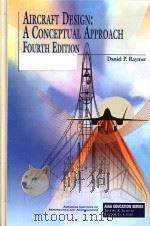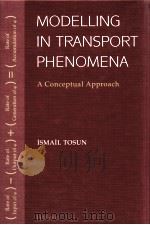《Aircraft design:a conceptual approach》
| 作者 | Daniel P.Raymer 编者 |
|---|---|
| 出版 | 未查询到或未知 |
| 参考页数 | 745 |
| 出版时间 | 没有确切时间的资料 目录预览 |
| ISBN号 | 0930403517 — 求助条款 |
| PDF编号 | 811405558(仅供预览,未存储实际文件) |
| 求助格式 | 扫描PDF(若分多册发行,每次仅能受理1册) |
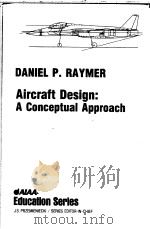
Chapter 1. Design—A Separate Discipline1
1.1What Is Design?1
1.2 Introduction to the Book1
Chapter 2. Overview of the Design Process3
2.1Introduction3
2.2 Phases of Aircraft Design4
2.3 Aircraft Conceptual Design Process7
Chapter 3. Sizing from a Conceptual Sketch11
3.1Introduction11
3.2 Takeoff-Weight Buildup11
3.3 Empty-Weight Estimation12
3.4 Fuel-Fraction Estimation14
3.5 Takeoff-Weight Calculation23
3.6 Design Example: ASW Aircraft24
Chapter 4.Airfoil and Geometry Selection33
4.1 Introduction33
4.2 Airfoil Selection33
4.3 Wing Geometry47
4.4 Biplane Wings65
4.5 Tail Geometry and Arrangement67
Chapter 5.Thrust-to-Weight Ratio and Wing Loading77
5.1 Introduction77
5.2 Thrust-to-Weight Ratio78
5.3 Wing Loading84
5.4 Selection of Thrust-to-Weight and Wing Loading99
Chapter 6.Initial Sizing101
6.1 Introduction101
6.2 Rubber-Engine Sizing102
6.3 Fixed-Engine Sizing108
6.4 Geometry Sizing109
6.5 Control-Surface Sizing113
Chapter 7.Configuration Layout and Loft117
7.1 Introduction117
7.2 End Products of Configuration Layout117
7.3 Conic Lofting123
7.4 Conic Fuselage Development129
7.5 Flat-Wrap Fuselage Lofting135
7.6 Circle-to-Square Adapter136
7.7 Fuselage Loft Verification137
7.8 Wing/Tail Layout and Loft139
7.9 Aircraft Layout Procedures149
7.10 Wetted Area Determination150
7.11 Volume Determination152
Chapter 8.Special Considerations in Configuration Layout155
8.1 Introduction155
8.2 Aerodynamic Considerations155
8.3 Structural Considerations158
8.4 Radar Detectability165
8.5 Infrared Detectability170
8.6 Visual Detectability171
8.7 Aural Signature171
8.8 Vulnerability Considerations172
8.9 Crashworthiness Considerations174
8.10 Producibility Considerations175
8.11 Maintainability Considerations179
Chapter 9.Crew Station, Passengers, and Payload181
9.1 Introduction181
9.2 Crew Station181
9.3 Passenger Compartment185
9.4 Cargo Provisions186
9.5 Weapons Carriage188
9.6 Gun Installation191
Chapter 10.Propulsion and Fuel System Integration193
10.1 Introduction193
10.2 Propulsion Selection193
10.3 Jet-Engine Integration196
10.4 Propeller-Engine Integration220
10.5 Fuel System226
Chapter 11. Landing Gear and Subsystems229
11.1Introduction229
11.2 Landing Gear Arrangements229
11.3 Tire Sizing233
11.4 Shock Absorbers239
11.5 Castoring-Wheel Geometry246
11.6 Gear-Retraction Geometry247
11.7 Seaplanes250
11.8 Subsystems252
Chapter 12.Aerodynamics257
12.1 Introduction257
12.2 Aerodynamic Forces258
12.3 Aerodynamic Coefficients262
12.4 Lift263
12.5 Parasite (Zero-Lift) Drag280
12.6 Drag Due to Lift (Induced Drag)297
12.7 Aerodynamic Codes and Computational Fluid Dynamics (CFD)305
Chapter 13.Propulsion313
13.1 Introduction313
13.2 Jet-Engine Thrust Considerations315
13.3 Turbojet Installed Thrust317
13.4 Thrust-Drag Bookkeeping317
13.5 Installed-Thrust Methodology318
13.6 Piston-Engine Performance325
13.7 Turboprop Performance331
Chapter 14.Structures and Loads333
14.1 Introduction333
14.2 Loads Categories334
14.3 Air Loads335
14.4 Inertial Loads347
14.5 Power-Plant Loads348
14.6 Landing-Gear Loads348
14.7 Structures Fundamentals349
14.8 Material Selection354
14.9 Material Properties357
14.10 Structural-Analysis Fundamentals369
14.11 Finite-Element Structural Analysis389
Chapter 15.Weights385
15.1 Introduction395
15.2 Approximate Group Weights Method399
15.3 Statistical Group Weights Method399
15.4 Additional Considerations in Weights Estimation407
Chapter 16.Stability, Control, and Handling Qualities411
16.1 Introduction411
16.2 Coordinate Systems and Definitions413
16.3 Longitudinal Static Stability and Control414
16.4 Lateral-Directional Static Stability and Control433
16.5 Stick-Free Stability441
16.6 Effects of Flexibility442
16.7 Dynamic Stability443
16.8 Quasi-Steady State446
16.9 Inertia Coupling448
16.10 Handling Qualities449
Chapter 17.Performance and Flight Mechanics455
17.1 Introduction and Equations of Motion455
17.2 Steady Level Flight457
17.3 Steady Climbing and Descending Flight463
17.4 Level Turning Flight467
17.5 Gliding Flight471
17.6 Energy-Maneuverability Methods475
17.7 Operating Envelope483
17.8 Takeoff Analysis486
17.9 Landing Analysis489
17.10 Other Fighter Performance Measures of Merit491
Chapter 18.Cost Analysis501
18.1 Introduction501
18.2 Elements of Life-Cycle Cost503
18.3 Cost-Estimating Methods505
18.4 RDTE and Production Costs506
18.5 Operations and Maintenance Costs510
18.6 Cost Measures of Merit (Military)514
18.7 Airline Economics514
Chapter 19.Sizing and Trade Studies519
19.1 Introduction519
19.2 Detailed Sizing Methods519
19.3 Improved Conceptual Sizing Methods520
19.4 Sizing Matrix and Carpet Plots525
19.5 Trade Studies532
Chapter 20.VTOL Aircraft Design537
20.1 Introduction537
20.2 VTOL Terminology538
20.3 Fundamental Problems of VTOL Design538
20.4 VTOL Jet-Propulsion Options541
20.5 Vectoring-Nozzle Types547
20.6 Suckdown and Fountain Lift551
20.7 Recirculation and Hot-Gas Ingestion552
20.8 VTOL Footprint553
20.9 VTOL Control554
20.10 VTOL Propulsion Considerations555
20.11 Weight Effects of VTOL556
20.12 Sizing Effects of VTOL557
Chapter 21.Conceptual Design Examples559
21.1 Introduction559
21.2 Single-Seat Aerobatic559
21.3 Lightweight Supercruise Fighter603
Appendix A658
A.1Conversion Tables658
A.2 Standard Atmosphere and Shock Tables660
A.3 Airfoil Data687
A.4 Typical Engine Performance Curves717
A.5 Design Requirements and Specifications731
References735
Subject Index739
《Aircraft design:a conceptual approach》由于是年代较久的资料都绝版了,几乎不可能购买到实物。如果大家为了学习确实需要,可向博主求助其电子版PDF文件。对合法合规的求助,我会当即受理并将下载地址发送给你。
高度相关资料
-
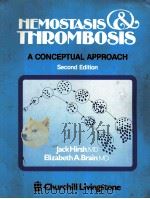
- HEMOSTASIS & THROMBOSIS A CONCEPTUAL APPROACH SECOND EDITION
- 1983 CHURCHILL LIVINGSTONE
-
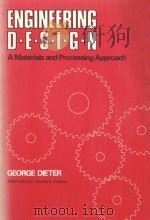
- ENGINEERING DESIGN:A MATERIALS AND PROCESSING APPROACH
- 1983 MCGRAW-HILL INTERNATIONAL BOOK COMPANY
-
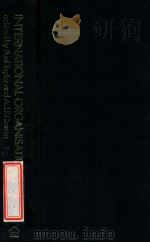
- INTERNATIONAL ORGANISATION A CONCEPTUAL APPROACH
- 1978 FRANCES PINTER LTD.
-
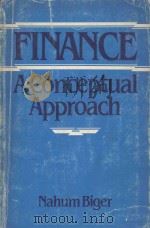
- FINANCE A CONCEPTUAL APPROACH
- 1981 BUTTERWORTHS
-

- MATHEMATICS FOR ELEMENTARY TEACHERS A CONCEPTUAL APPROACH THIRD EDITION
- 1992 WM.C.BROWN PUBLISHERS
-
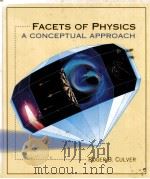
- FACETS OF PHYSICS:A CONCEPTUAL APPROACH
- 1993 WEST PUBLISHING COMPANY
-
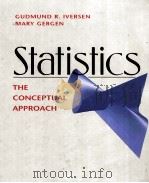
- STATISTICS:THE CONCEPTUAL APPROACH
- 1997 SPRINGER
-

- SOCIOLOGY A CONCEPTUAL APPROACH SECOND EDITION
- 1989 ALLYN AND BACON
-
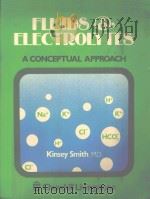
- FLUIDS ELECTROLYTES A CONCEPTUAL APPROACH
- 1980 CHURCHILL LIVINGSTONE
提示:百度云已更名为百度网盘(百度盘),天翼云盘、微盘下载地址……暂未提供。➥ PDF文字可复制化或转WORD
